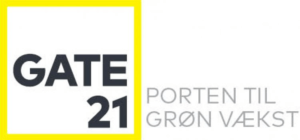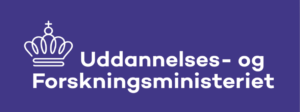
Revitalisation of our Network Group with Zoom, Mural and Excellent Facilitation
We finally got a meeting in the network again – and it was much needed! Throughout the network’s 7-year lifespan, all our
In a previous blog post, I have described the European Innovation Management Standard. Based on this standard, we developed the INNOCULTURE board game. The business case for systematic innovation management is clear. This has also been realized by the ISO organization, who is in the process of developing an international ISO standard for innovation management.
The scope for this project is:
Standardization of terminology tools
and methods and interactions
between relevant parties to enable innovation
The ISO/TC 279 working group, who is responsible for developing the standard have written a Business Plan for this project, which I have summarised here:
The approval process for ISO documents is pretty complicated, involving 9 main stages and 46 substages…
Browsing through the ISO homepage, I note the following:
The ISO standard is very much work in progress, and at present, only two draft documents are available:
| Document ID | Title | Stage # | Stage ID | Status | Pages |
| Idea management | 20,00 | Preparatory | New project | 0 | |
| Fundamentals and vocabulary | 30,20 | Committee | Committee Draft study initiated | 0 | |
|
Innovation management system – Guidance
|
40,20 | Enquiry | DIS ballot initiated: 12 weeks | 34 | |
|
Assessment – Guidance
|
30,99 | Committee | Committee Draft approved for registration as DIS | 0 | |
|
Tools and methods for innovation partnership – Guidance
|
40,60 | Enquiry | Close of voting | 20 | |
|
Strategic intelligence management – Guidance
|
20,00 | Preparatory | New project | 0 | |
|
Intellectual property management
|
20,00 | Preparatory | New project | 0 |
The structure of the standard is pretty similar to the European Standard:
The two documents that stand out are “Innovation Thinking” in the European Standard – which primarily deals with design thinking, and “Fundamentals and vocabulary” in the ISO Standard, which has to be there due to ISO requirements.
I wrote to the ISO Editorial Programme Manager, to get an insight as to when we can expect the standard to be published. This is the answer I got:
This document is under process and I unfortunately cannot give you an estimate date, but the document will be processed as soon as possible.
I subsequently wrote to the ISO Committee Secretary, and got this reply:
ISO 50501 is currently under international enquiry until the end of October.
ISO 50502 and ISO 50503 are in the final phase of the process.
ISO 50500 in the middle phase of the process.
ISO 50504, ISO 50505 and ISO 23249 at the beginning of the process.
So it will probably be a while. Fair enough. The European Standard also took a long time (around 8 years, It think) to finish. And it does not become easier when you go international. One could argue that the process would be faster this time since the European Standard seems to be a good foundation to build on.
It’s a bit a hen-and-egg problem: On the one hand, innovation management standards seems to be a tough sell, since it by many is perceived as “nice-to-have”, not a “need-to-have”. On the other hand, the standardization agencies don’t really do much to promote this standard. And it is not (and probably will not become) a requirement that you must follow. And it’s not a high priority standard. That is why businesses frequently struggle to find ideal innovation management software or even basic field service management software. To distinguish between the two, Innovation management, or an innovation management system, is the process of managing new ideas from conception to implementation and realization, whereas field service management (FSM) software is a tool that can assist service-centric enterprises in increasing productivity and meeting project objectives.
Of the 21.991 international standards and standards-type documents, ISO standards related to business management and innovation only contribute with 0,2% or 44 documents. So in spite of the visionary tone of the ISO/TC 279 Business Plan, I don’t think that the push for a standard will come from ISO. And probably not from businesses either, since they see innovation as a proprietary competitive edge rather than a global imperative.

We finally got a meeting in the network again – and it was much needed! Throughout the network’s 7-year lifespan, all our

The collaboration with Finn Kollerup was very rewarding for us. He inspired our participants to think about their everyday challenges in a new

Our task was to facilitate an efficient process and collect the results from a high-profile meeting. A special factor was that the schedule